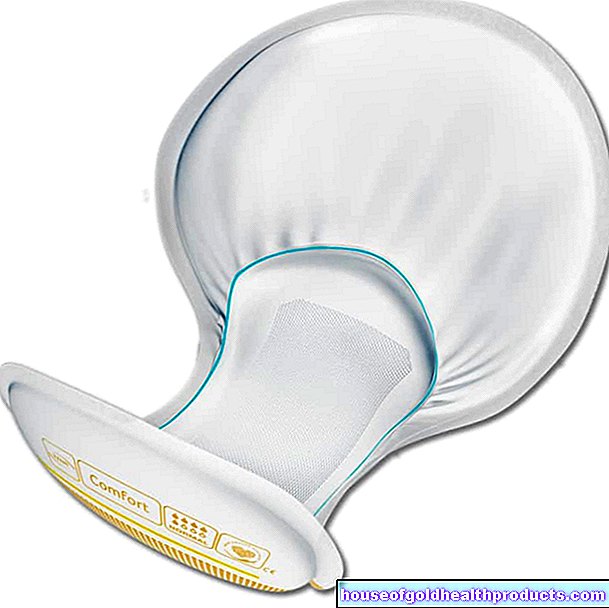Whipple surgery
All content is checked by medical journalists.The Whipple operation is a surgical procedure in the upper abdomen, the main target of which is usually a malignant tumor of the pancreas. In addition to parts of the pancreas, the small intestine and possibly the stomach, the doctor can also remove the gallbladder and biliary tract. Read everything about the procedure, what risks it entails and what you as a patient must be aware of afterwards.

What is Whipple Surgery?
The Whipple operation is a surgical procedure in the upper abdomen in which the pancreas is sometimes or partially removed. It is an extremely complex operation that should only be performed in specialized centers.
The Whipple operation is named after the American surgeon Allen Whipple, who made a significant contribution to the development of this procedure. The German surgeon Walther Kausch also played a major role in this, which is why one speaks of the Kausch-Whipple operation.
When is Whipple Surgery Performed?
The Whipple operation is used for various pathological changes in the head of the pancreas or surrounding structures. These include malignant neoplasms (carcinomas), inflammations or occlusions. The "head of the pancreas" refers to the thick, right third of the pancreas, which is close to the duodenum and part of the bile duct.
The most common reason for Whipple surgery is pancreatic cancer, which mostly originates from the head of the organ.This is an extremely aggressive disease. The tumor grows quickly and spreads early on via lymph and blood vessels to the surrounding organs. It is therefore important to operate over a large area in order to remove any possible spread of the cancer.
What do you do with a Whipple operation?
The operation is divided into resection, i.e. the removal of the organs and the reconstruction, the restoration of the gastrointestinal passage. The major procedure takes about five to six hours and is performed under general anesthesia.
The resection
In the Whipple operation, the organs are accessed via a long, transverse incision in the right upper abdomen. After opening the patient, the so-called tumor search follows. The surgeon must determine with the naked eye how far the malignant tissue has spread and which organs are affected. If the tumor has already spread too widely, it can no longer be surgically removed. Then the Whipple operation is not completed and instead treated with palliative care.
If the patient is operable, the doctor may remove the following organs:
- Head of the pancreas, if necessary the entire pancreas
- Duodenum and possibly part of the stomach
- Gallbladder and parts of the biliary tract
- Parts of the great network (greater omentum, peritoneum)
- Surrounding lymph nodes
Depending on how far the tumor has spread, the pancreas and parts of the stomach are completely removed. Basically, the surgeon tries to remove as little as possible. Unfortunately, it is often no longer possible to remove the entire tumor because the diagnosis is often made too late. Even with the greatest possible resection, the cancer returns in 95 percent of cases.
The reconstruction
The surgeon sutures the detached small intestine to the remaining part of the pancreas and connects the stump of the biliary tract with the intestine. In order to restore a continuous gastrointestinal passage, the doctor sews the remaining stomach to the draining piece of the small intestine about 40 centimeters behind the connection to the bile duct. Now he closes the surgical wound with careful hemostasis with sutures and connects it. The patient is taken to the recovery room, where doctors and nurses monitor him.
What are the risks of a Whipple operation?
With any surgical procedure there are general risks that the patient needs to be aware of. This includes:
- Bleeding and bruising, you may need to have blood
- Injury to adjacent organs
- Injury to nerves, sometimes with permanent damage
- Wound healing disorders
- Infections
- Storage damage caused by pressure
There are also certain complications that can occur specifically during or after the Whipple operation.
- Fistula formation: For example, unnatural connections are created between the intestine and other organs.
- Organ failure of the liver, kidneys or heart
- Broken seam (incisional hernia)
- Intestinal obstruction
- Diabetes (diabetes mellitus): If the entire pancreas has been removed, people can no longer produce insulin.
- Indigestion and weight loss after surgery
- Anastomotic leakage: The surgical connections between the bile duct, stomach and intestine are leaking or rupturing.
Dumping syndrome
Another typical complication that can occur after the Whipple operation is the so-called dumping syndrome. If parts of the stomach were also removed during the procedure, it can no longer fulfill its reserve function. The food pulp, which normally remains in the stomach for a certain period of time and is pre-digested there, then reaches the small intestine shortly after eating. After meals, this sometimes leads to a sharp drop in blood pressure and nausea (early dumping) and, a few hours later, causes hypoglycaemia (late dumping).
What do I have to consider after a Whipple operation?
Since this is a major procedure, you as a patient will have a long hospital stay after the Whipple operation. Allow three to four weeks. If complications arise, you may need to stay in hospital for longer.
Because pancreatic cancer spreads quickly and individual cells can already be scattered around the body, chemotherapy is necessary in addition to the operation, which usually lasts six months.
After the pancreas or its head has been removed, the enzymes that it produces in healthy people must be supplied from the outside. This is known as substitution therapy. This means that most patients are largely symptom-free. However, certain discomforts can arise due to the removal of the various organs.
Warning signs after Whipple surgery
Problems may increase in the days after the Whipple operation. As a patient, you should know when to contact your doctor immediately. Please pay attention to the following warning signs:
- fever
- chills
- Persistent diarrhea or vomiting
- Significant pain
- Significant reddening in the wound area
- Opening the seam
- Oozing wound (blood, secretion, or pus)
- Stool retention for three days
Diet after Whipple surgery
The Whipple surgery is a major invasion of the patient's digestive system. The body can adapt to the changes to a certain extent. Those affected should however observe certain dietary rules in order to keep the stress on the gastrointestinal tract as low as possible:
- Restricting carbohydrate intake
- Decreased consumption of dairy products
- Avoid foods rich in fiber (e.g. cabbage, mushrooms, leeks)
- Multiple small meals instead of fewer large meals
- No drinks during and shortly after eating
- Chewing thoroughly and eating slowly
- No food that is too cold or too hot
Be sure to tell your doctor if your symptoms do not improve for a long time after the Whipple operation despite the change in diet. They may be able to help you with certain medications or another operation.
Tags: menopause eyes laboratory values





























.jpg)